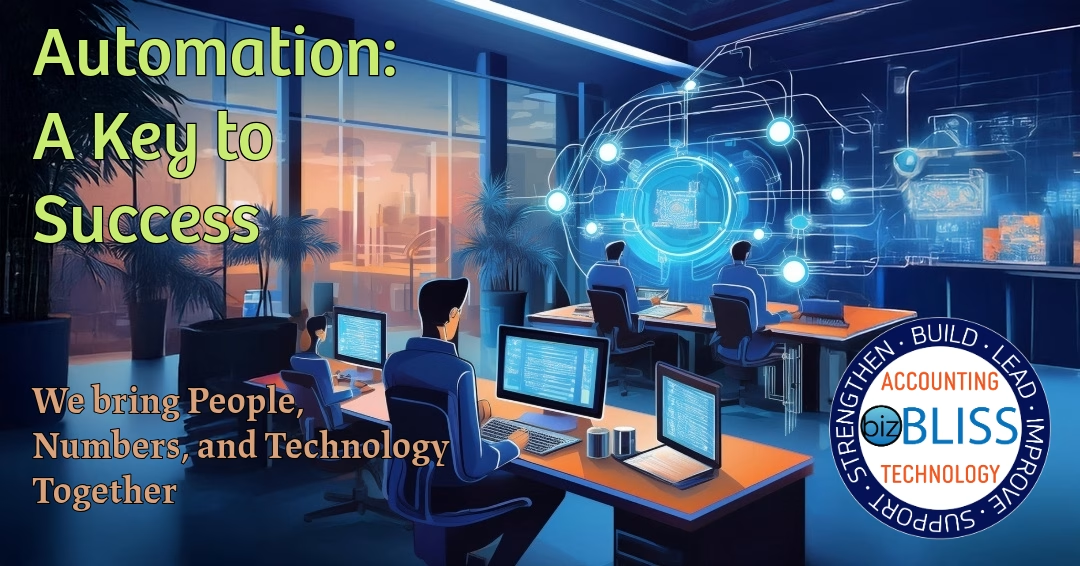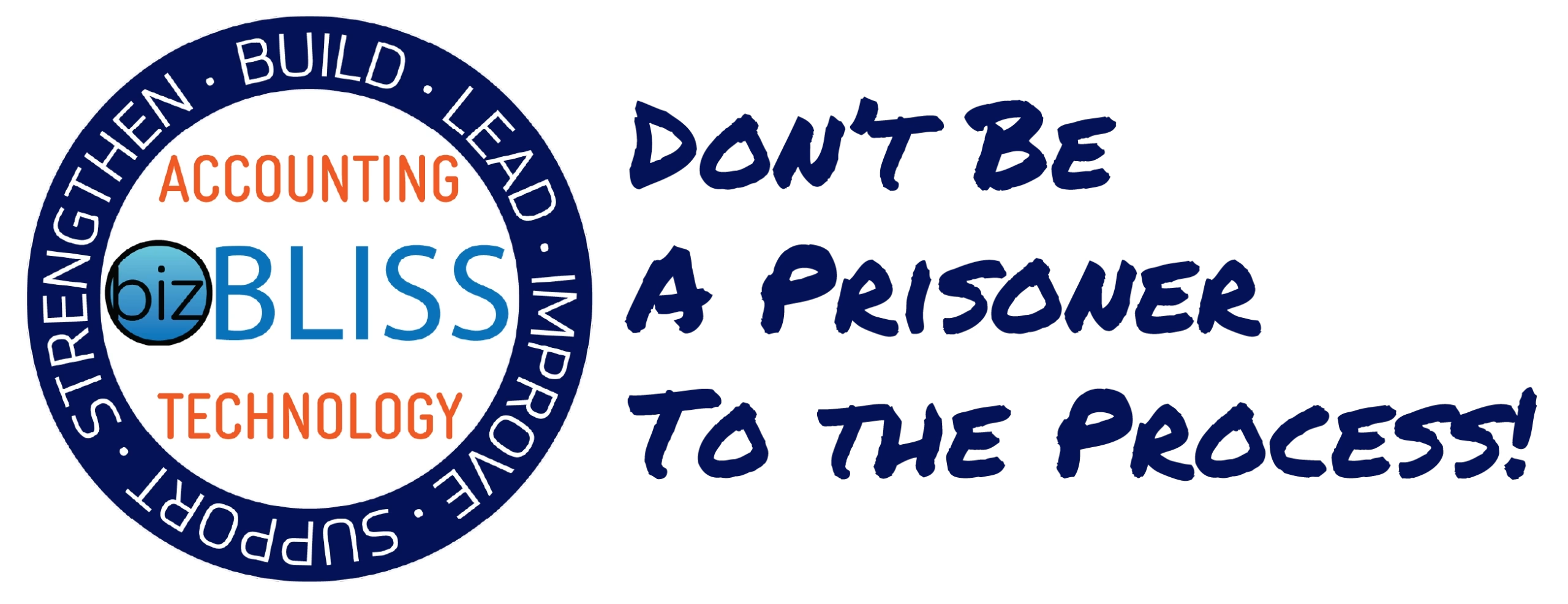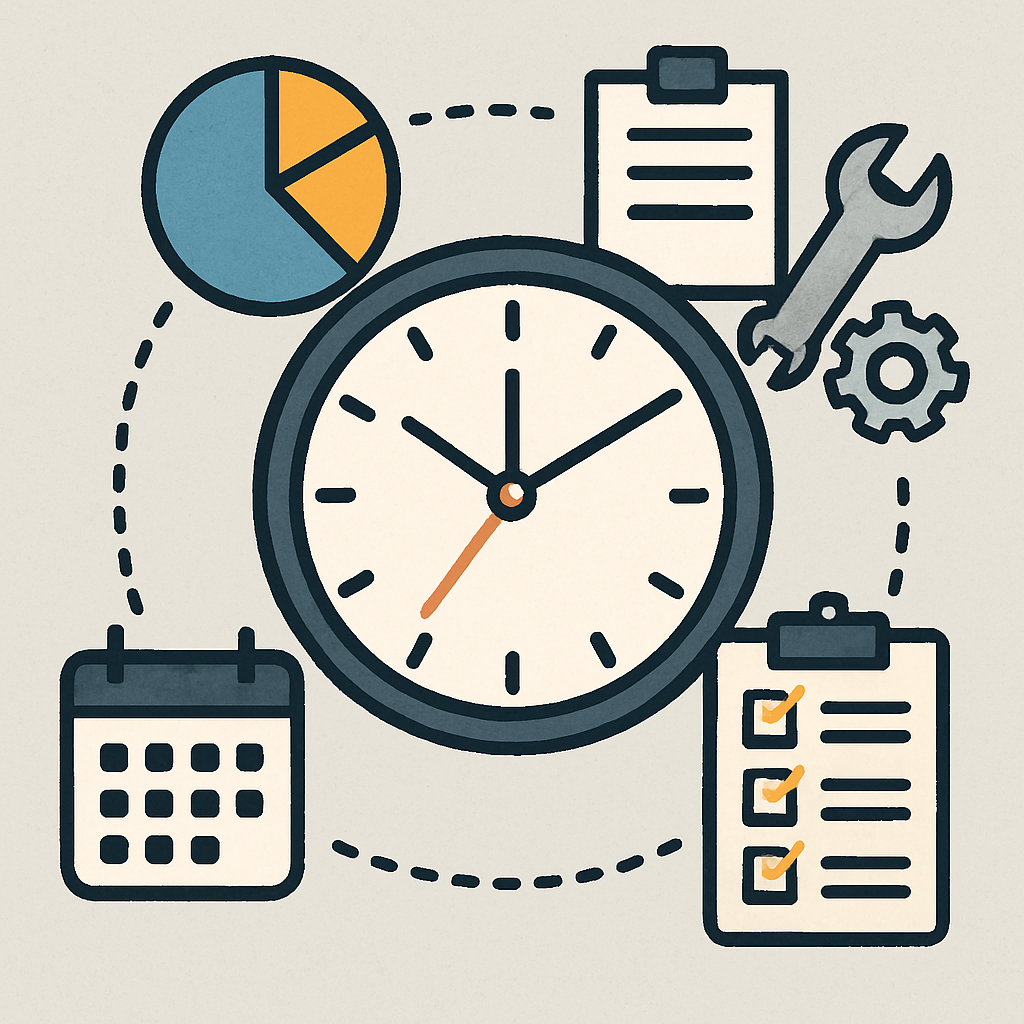Mastering Time Management for Administrative Tasks

Time is a precious resource for administrative professionals. Managing it well can make a significant difference in productivity.
Admin time management is not just about working faster. It’s about working smarter and more efficiently.
Effective time management strategies can transform how you handle tasks. They help prioritize what truly matters.
Task prioritization methods like the Eisenhower Box and ABC prioritization are essential tools. They guide you in focusing on high-impact activities.
Setting SMART goals is another key strategy. It ensures your efforts align with your objectives.
Digital tools and apps can also enhance your efficiency. They streamline scheduling, task tracking, and communication.
Minimizing distractions and managing interruptions are crucial for maintaining focus. They help protect your valuable time.
Mastering these techniques can lead to administrative excellence. It’s about creating a balanced, productive work environment.
The Importance of Admin Time Management
Admin time management is vital for maintaining productivity and effectiveness. It enables professionals to complete tasks on schedule and improve office efficiency.
Poor time management can lead to missed deadlines and increased stress. This could negatively impact job performance and job satisfaction.
By prioritizing tasks effectively, administrative professionals can allocate time to high-priority items. This ensures that important tasks are not overlooked.
Key benefits of effective admin time management include:
- Enhanced productivity and efficiency.
- Reduction in workplace stress and burnout.
- Improved decision-making abilities.
- Better work-life balance.
Administrators often juggle many tasks daily. Time management strategies help streamline workflows, ensuring smooth operations.
Understanding how to manage your time is crucial. It leads to better control over both personal and professional tasks.
Effective time management creates a positive work environment where everyone benefits. It’s a skill that boosts overall job satisfaction and success.
Common Time Management Challenges for Administrative Professionals
Administrative professionals face numerous time management challenges daily. Interruptions and urgent requests often disrupt scheduled plans, making time management tricky.
Managing a high volume of emails can be overwhelming. It requires constant attention, leading to wasted hours and divided focus.
Pressure to multitask is another hurdle. While it seems efficient, it often reduces the quality of work and increases errors.
Common time management challenges include:
- Constant interruptions and unexpected tasks.
- Overwhelming volumes of emails.
- Pressure to multitask.
- Difficulty in prioritizing effectively.
Balancing the needs of multiple supervisors presents a challenge. Differing priorities can lead to conflicting demands on time.
Lastly, inadequate tools and resources can hinder time management efforts. Without the right support, managing time effectively becomes an uphill task.
Addressing these challenges with strategic time management can enhance both productivity and job satisfaction significantly.
Task Prioritization Methods: Choosing What Matters Most
Effective task prioritization is key for managing administrative tasks. It helps decide what needs your attention first. This clarity leads to efficient use of time and increased productivity.
Different methods suit different needs. The right approach depends on your specific role and workload.
Prioritization Methods:
- Eisenhower Box
- ABC Prioritization
- Pareto Principle
These methods help categorize tasks based on urgency and importance. This way, you can focus on what truly matters.

Using these strategies, tasks become manageable. They transform a chaotic to-do list into a clear, actionable plan.
Begin with identifying tasks. Understand their impact and deadlines. Once you have a list, apply these methods to sort them effectively.
Having a structured approach prevents overwhelming feelings. It also ensures that critical tasks are not overlooked.
Consistent use of task prioritization methods leads to better organization. Over time, they become intuitive, streamlining daily work processes effortlessly.
The Eisenhower Box
The Eisenhower Box helps sort tasks into four categories. It uses a two-dimensional box to separate tasks by urgency and importance.
Eisenhower Box Categories:
- Urgent and Important: Do these first.
- Important but Not Urgent: Schedule these.
- Urgent but Not Important: Delegate if possible.
- Neither: Consider eliminating.
This method makes decision-making straightforward. It focuses attention on tasks that deserve priority.
ABC Prioritization
ABC Prioritization assigns tasks one of three categories: A, B, or C. This method ranks tasks based on importance.
ABC Task Categories:
- A: Critical tasks that need immediate attention.
- B: Important but less urgent tasks.
- C: Nice-to-do tasks with low impact.
By categorizing tasks, you can ensure that crucial activities are handled promptly.
The Pareto Principle (80/20 Rule)
The Pareto Principle states that 80% of results come from 20% of efforts. Identify the 20% of tasks that will yield the most outcomes.
How to Apply the Pareto Principle:
- Focus on tasks that drive key results.
- Minimize time on less impactful tasks.
Apply this principle to maximize efficiency. It ensures that your focus remains on high-impact activities.
Setting SMART Goals for Administrative Success
Setting SMART goals is crucial for administrative professionals. These goals are specific, measurable, achievable, relevant, and time-bound. They provide clear direction and facilitate efficient task management.
Defining clear objectives prevents wasted effort. It ensures every task contributes to larger organizational goals.
Elements of SMART Goals:
- Specific: Clearly defined outcomes.
- Measurable: Criteria for progress evaluation.
- Achievable: Realistic and attainable.
- Relevant: Aligns with broader objectives.
- Time-bound: Deadlines for completion.
By following this framework, tasks become purposeful. They bring focus to daily operations.
Achieving SMART goals boosts confidence. It shows the tangible impact of your work, enhancing motivation.

Regularly review and adjust your goals. This keeps your strategies aligned with changing priorities.
Building Effective Schedules: Daily and Weekly Planning
Creating a robust schedule is key to mastering admin time management. It ensures tasks are prioritized and deadlines met. Effective planning minimizes stress and enhances productivity.
Start by identifying your most important tasks. These should take precedence in your daily schedule. Break down tasks into manageable segments to avoid feeling overwhelmed.
Daily and Weekly Planning Tips:
- Daily Planning: Create a to-do list every morning.
- Weekly Planning: Allocate time for larger projects at the start of the week.
- Review: Evaluate your progress at week’s end and adjust as needed.
Balancing commitments is crucial. Include buffer time for unexpected tasks. This flexibility prevents disruptions from derailing your schedule.
Consistent planning fosters a sense of control. It allows for strategic task prioritization. With a proper schedule, administrative work becomes streamlined and efficient.

Time Management Strategies for the Modern Office
Adopting effective time management strategies is crucial in modern offices. These strategies enhance productivity and ensure admin tasks are handled efficiently. They help in tackling workloads without unnecessary stress.
Essential Strategies:
- Prioritize Tasks: Focus on high-impact tasks first.
- Limit Multitasking: Concentrate on one task to improve quality.
Managing workloads requires more than just prioritization. It’s essential to incorporate time-saving techniques. Digital tools can play a significant role in time management. They offer reminders and streamlined communication.
Key Tools:
- Calendar Apps: For managing schedules and appointments.
- Task Managers: Organize tasks and set reminders.
These tools enhance efficiency by reducing the likelihood of oversight. Collaborative tools further aid in managing group projects. They provide a centralized space for communication and task delegation.
Balancing technology with strategy is key to effective time management. It ensures that tasks are completed on time and with less effort.

Time Blocking and Batching Techniques
Time blocking is an effective method for managing time. It involves assigning specific time slots for tasks. This minimizes distractions and enhances focus.
Benefits of Time Blocking:
- Focus: Limits distractions by setting fixed time slots.
- Predictability: Helps create a routine and rhythm.
Batching involves grouping similar tasks together. This reduces transition time between different tasks. As a result, it enhances efficiency and streamlines workflow.
Batching Tips:
- Similar Tasks Together: Group and complete in a single time block.
- Limit Context Switching: Focuses efforts on one type of task at a time.
Employing these techniques ensures that administrative tasks are handled swiftly and with greater attention to detail.
Leveraging Digital Tools and Apps for Admin Efficiency
In today’s digital age, leveraging the right tools is essential. These tools streamline admin tasks and boost efficiency. They reduce manual workloads and prevent errors.
Digital apps can automate routine tasks, saving time and effort. They provide reminders, manage schedules, and enhance communication. Choosing the right apps depends on your specific needs.
Useful Apps for Admin Efficiency:
- Calendars: For organizing appointments.
- Task Trackers: To monitor progress.
- Communication Tools: To maintain effective collaboration.
These tools simplify complex processes and improve workflow. They help admins stay organized and focused. Integrating them into daily routines can significantly reduce stress and increase productivity.

The goal is to maximize efficiency with minimal resources. When used wisely, digital tools make admin work more manageable and effective, freeing up time for critical tasks.
Minimizing Distractions and Managing Interruptions
Distractions can derail even the best time management plans. Identifying common distractions at work is the first step. Once identified, they can be effectively managed.
Creating a distraction-free work zone is crucial. This may involve setting specific times for focused work. During these times, mute notifications and place a “do not disturb” sign if necessary.
Key Strategies to Minimize Disruptions:
- Designate quiet hours for concentration.
- Use noise-canceling headphones.
- Limit social media during work.
The key is setting boundaries to protect focus. By doing so, admins can work with greater clarity and efficiency, thus achieving more in less time.
Delegation and Outsourcing: Freeing Up Your Time
Delegation is essential for effective admin time management. It involves passing tasks to others who can handle them efficiently. By doing so, administrators can focus on high-impact activities.
Outsourcing is another powerful tool. It allows you to hand off specialized tasks to experts. This not only saves time but also ensures quality results.
Benefits of Delegation and Outsourcing:
- Reduces workload pressure.
- Increases productivity by focusing on core responsibilities.
- Improves quality by using specialized skills.
Embracing delegation and outsourcing helps manage workload better. It creates opportunities to concentrate on strategic tasks that truly matter. This approach leads to a well-balanced and productive work life.
Email, Meetings, and Communication: Streamlining the Essentials
Efficient communication is vital in admin roles. Managing emails and meetings effectively can save significant time. Begin by prioritizing emails to handle the most important first.
Make meetings count by keeping them short and focused. Prepare an agenda to ensure that discussions stay on track. This limits wasted time and promotes constructive dialogue.
Tips for Streamlined Communication:
- Prioritize urgent emails over less critical ones.
- Use agendas to keep meetings concise and focused.
- Utilize instant messaging for quick questions, reducing lengthy email threads.
Integrating these strategies helps maintain a smooth flow of communication. Streamlining your approach reduces distractions and enhances overall productivity. Emphasizing clear and effective communication is key to administrative success.
The Power of Breaks, Self-Care, and Boundaries
Taking breaks is crucial for maintaining productivity. Brief pauses enhance focus and prevent burnout. Implementing them can lead to more efficient work.
Self-care is vital for sustained energy levels. Incorporating healthy habits ensures you stay sharp. Regular exercise and a balanced diet support this goal.
Benefits of Breaks and Self-Care:
- Reduces stress
- Boosts mental clarity
- Enhances overall well-being
Setting boundaries protects your time. It helps you focus on priorities without unnecessary interruptions. Establishing these limits is key to maintaining balance.

Prioritizing breaks and self-care keeps you productive in the long run. Effective boundaries ensure that your work and personal time are respected. Together, these practices promote a healthier work-life balance.
Conducting a Time Audit: Identifying and Eliminating Time Wasters
A time audit helps reveal how you spend your hours. By analyzing your daily activities, you can identify areas that waste time. This process allows you to pinpoint inefficiencies.
Steps for a Time Audit:
- Track activities for a week
- Identify non-essential tasks
- Eliminate or delegate time-wasters
After completing a time audit, you’ll see where improvements can be made. Implementing changes based on your findings can boost your productivity dramatically.
Adapting to Change: Flexibility and Continuous Improvement
Adaptability is crucial for admins facing ever-changing tasks. Embrace flexibility to handle unexpected changes efficiently. Continuously refine your strategies.
Ways to Adapt and Improve:
- Stay open to new ideas
- Regularly review processes
- Learn from past experiences
By making small, ongoing adjustments, you ensure smooth operations and maintain high productivity.
Conclusion: Your Path to Administrative Excellence
Mastering admin time management requires dedication and practice. Implement these strategies to enhance your productivity and efficiency. Consistent effort leads to noticeable improvements.
Remember, refining your approach is a continuous journey. Stay committed to your goals and adapt as necessary. Your proactive steps will pave the way to administrative success.
Key Takeaways
Estimated reading time: 11 minutes


